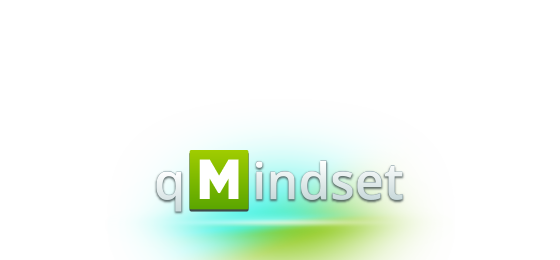Introduction
CSL stands for Controlled Shipping Level. Controlled Shipping is both a systematic procedure and a status. If a supplier has shipped non-conform parts, its customer has the
right to put the supplier into the state of "Controlled Shipping". If this happens, the supplier has to start the procedure of controlled shipping, according to the level required by customer who initiated the
request.
CSL is a generally used procedure in many industrial sectors, and it’s rife especially in the automotive sector. It has been formed to support the safeguarding of the supply
chain from defects and non-conformities.
Source: qMindset.com
Key Features
While non-series, unique failures are handled with a conventional
8D process, CSL activities
are usually required to contain and eliminate systematic (series) defects. In such a case, the supplier quality management (SQM) of the customer evaluates the actual situation by assessing the "weight" (severity)
and the density of the failure, and places the supplier into CSL1 (or CSL2) with an official written request. The formal letter should contain the following points:
- Failure description.
- Affected part numbers, plants.
- History of the claim, relevant 8Ds issued until now.
- Reporting and review frequency demanded by the customer (e.g. daily reporting, weekly review of status).
- Naming what CSL level has been selected.
- Possible 3rd party service providers that can be selected (if CSL2 is chosen).
- The supplier must notify its certification body in 5 business days that it has been placed into CSL2 (only relevant in case of CSL2).
- Exit criteria.
- Contact information.
The chart below describes a general CSL procedure from start to closure of the issue:

The processes of CSL (Source: qMindset.com)
Different CSL levels mean different activity levels as well. Some companies use the wording CSL3, while others not, but this level usually means a serious state, resulting
the status "business on hold". If a company is in the state of "business on hold", it cannot win new projects from the given customer, or even those projects are suspended temporarily, which are already in
the contracting phase. There are special cases, when an independent external service provider is involved in the problem solving process, already on CSL2 level, or on the level of "business on hold". The
following table summarizes the major controlled shipping levels and the joint activities:
| CSL levels and activities |
| CSL Levels |
Activities |
Performed by |
| CSL 1 |
Containment: 100% redundant inspection / testing |
Supplier |
| Problem solving activity: as per 8D report
(root cause analysis, definition and implementation of
counter-measures) |
Supplier |
| CSL 2 |
Containment: 100% redundant inspection / testing |
Supplier |
| Containment: additional 100% redundant inspection / testing |
Independent 3rd party service provider |
| Problem solving activity: as per 8D report (root cause analysis, definition and implementation of counter-measures) |
Supplier
(3rd party service provider may be involved) |
| Enhanced CSL2, or CSL3 (Possible "Business on Hold" / "Task Force") |
Containment: special delivery decisions or business on hold with suspended deliveries, defined by the customer |
Supplier |
| Problem solving activity: task force team |
Supplier, Customer, 3rd party |
| Additional conditions: no new business or project is awarded to the given supplier during "business on hold" |
Customer |
Performing CSL activities is special case by case, but the general principles are always the same. CSL has two important targets: the first is to defend the customer from
receiving defective parts by isolating the supply chain, the second is to find and eliminate the root cause as fast as possible.
To do this, the following tools are necessary to implement:
- Kick-off meeting between the supplier, the customer and the 3rd party to define the scope.
- Dedicated and suitable containment area with specified conditions (e.g. humidity, light, etc.), layout and material flow.
- Dedicated testing and labelling equipment.
- Risk mitigation by FMEA (for all risks arise due to handling, inspection and tests).
- Control of non-conforming parts with a validated method (inspection control plan and process flow chart).
- Definition of boundary / limit samples if applicable.
- Approved inspection / testing instructions.
- Trained and certified staff.
- Reporting formulae (that has been accepted by the customer).
- Agreed reporting frequency and escalation plan.
- Layered audits at the supplier, performance monitoring with quality metrics.
- Clear and pre-defined exit criteria (verified root cause and effective counter-measures, defect free deliveries for a given time-frame or quantity, etc.).
Exit criteria are defined by the customer, that need to have a general rule for controlled shipping issues in its supplier manual. Some examples for conditions that can
allow the supplier to exit CSL:
- Documentation about proven root cause, verified and effective corrective actions, error proofing (preventive actions).
- Defect free deliveries for 30 days.
- Defect free deliveries for 10 consecutive shipments.
These rules are always determined by the customer, and are not specified by standards.
After a CSL has been found successful, the customer must send a signed official letter to the supplier, permitting it to suspend CSL activities and exit CSL.
It is also a valid question, what happens if the issue cannot be solved, or it causes extraordinary financial controversy for the affected companies, and there is no way back
from "business on hold". There is no general rule, however it can happen that the customer ramps down the supplier and stops all activities. Of course this is always a hard decision, as customers are also exposed
to their suppliers, because changing to and ramping up a new supplier takes time and money.
Source: qMindset.com
Hints
CSL is not just a sorting or inspection procedure. It holds further activities, such as the elimination of defects by problem solving, root cause analysis, and the
implementation of corrective and preventive actions. The CSL status is in place until the root cause is not eliminated, so finding it is the interest of all stakeholders.
It is very important to note, that CSL is not supplemental to the normal 100% inspection or testing, which the supplier performs in its daily production. CLS is always a
redundant process, on top of the normal series activities, whether it’s done by the supplier (CSL1) or an independent 3rd party (CSL2).
Source: qMindset.com




